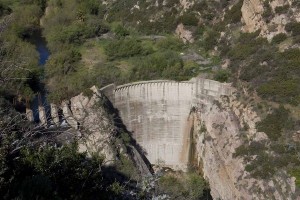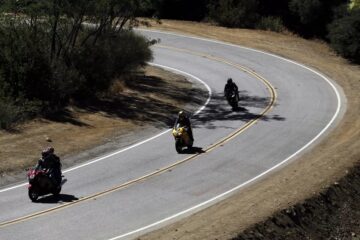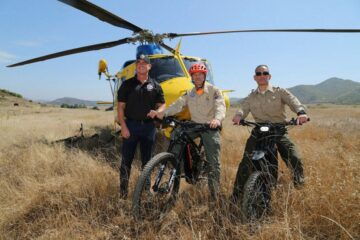Rindge Dam closes to the public
Rindge Dam on Malibu Creek will be closed to the public starting Aug. 21.
Source of this article: The Thousand Oaks Acorn, August 21, 2014
California State Parks officials say the 88-year-old dam is being closed for a variety of reasons related to public safety and protection of the environment.
The Rindge Dam, built by the Rindge and Adamson families in the 1920s for cattle and farming, is an aging structure not intended as a recreation area. It’s only accessible by steep footpaths that were created by visitors and are not maintained.

LOOK OUT BELOW—Visitors will no longer be allowed at Rindge Dam due to safety and environmental factors.
But that hasn’t stopped cliff jumpers and hikers, who are attracted to the dam’s 100-foot drop and deep, year-round pond.
In the past five years authorities have reported one suicide and five significant injuries at the site.
In October 2011, a 21-yearold Agoura Hills resident jumped to his death from the top of the dam. The most recent injury took place last November, when a Winnetka man fell 200 feet trying to access the dam.
Jamie King, an environmental scientist for California State Parks, expressed concern at a Calabasas Environmental Commission meeting last fall.
“This is very concerning for us. There are dangerous videos urging people to jump off the dam,” King told the Acorn.
Rescuers face obstacles, and response times are delayed in the area because of the remote location and difficult terrain, which also limit the amount of emergency equipment that can be brought in.
Other safety factors include sanitation problems, as there are no restrooms or trash cans at the dam and no feasible way of providing them, creating a public health hazard.
Human waste and trash from the area are washed into Malibu Creek, Malibu Lagoon and the ocean, endangering wildlife.
The habitat is threatened by the uprooting of vegetation by hikers, whose footpaths serve as conduits for sediment into the creek. Excess sediment threatens the endangered southern steelhead trout that inhabit the creek below the dam.



0 Comments